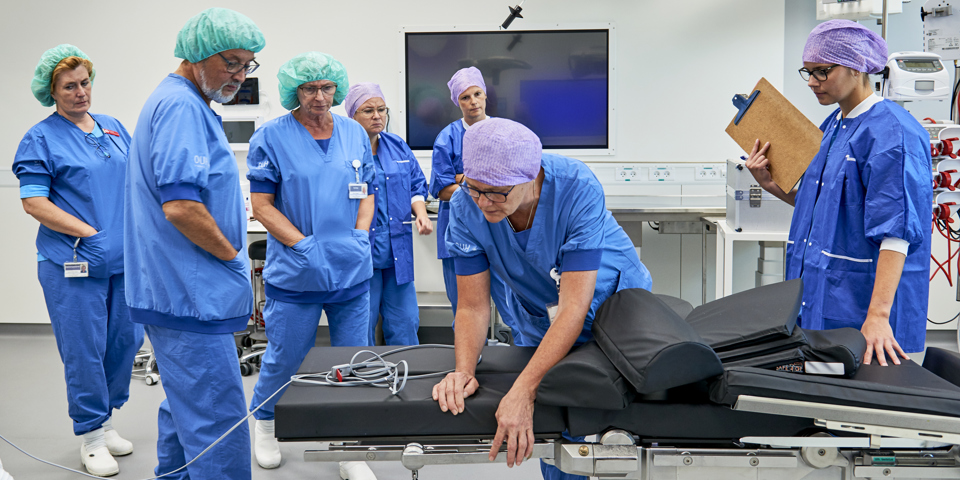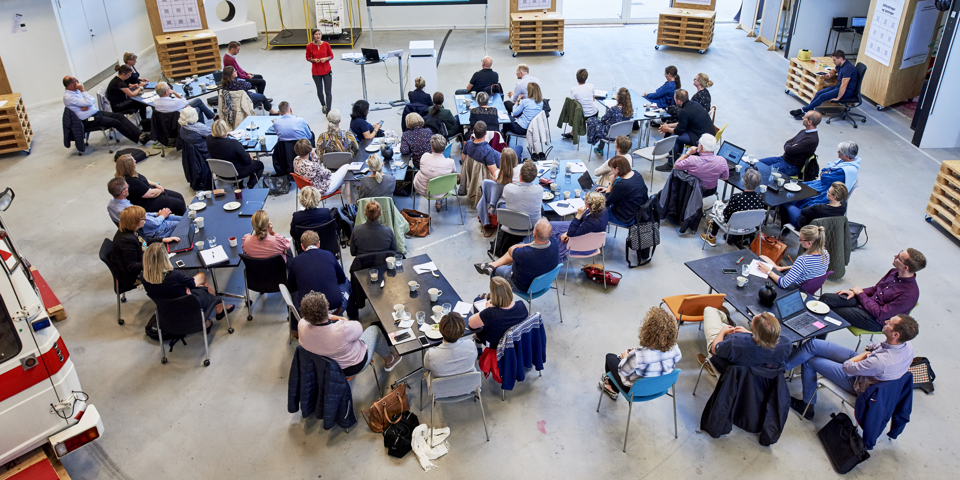User-Centred Design
In the Health Innovation Centre of Southern Denmark, we approach User-Centred Design through a five-step, iterative process, where we focus on the users – e.g., healthcare professionals, patients and their families – and their needs in each phase of the design- and development process. We offer a range of strategic tools to carefully understand, include and co-create with the users when the timing is right.
In the Health Innovation Centre of Southern Denmark, we define User-Centred Design as studies on- and the inclusion of users in innovative processes.
When working with user-centred design, the important questions to ask are:
- How can we understand the user – what they feel, how they think, what motivates them and what behaviours do they have?
- What choices do they make – based on what and whom, and in which context?
- What does it mean to make both material (physical) and immaterial (services and workflows) products more useful and valuable to the users?
We offer:
- A preliminary meeting discussing the ideas and potential match with users’ needs for your project
- Strategic tools on how to understand and include as well as co-create with users
- We facilitate collaboration with and participation of users in different phases of the project when the timing is strategically right
- We perform mixed-methods and qualitative studies that allow us to get a deeper understanding of the users, their tasks and environments, consider the users’ perspective in relation to product development (material or immaterial), and look for the emotive choices and reasons for a person’s individual, social and cultural behaviours.
It is rare for innovation processes within a healthcare regime to be entirely driven by users themselves. In many cases, the idea and initiative for an innovation project comes as a top-down decision. Therefore, one of our main goals at SDSI is to understand and let users participate in the design- and/or innovation project as much and timely as possible, to make sure relevant users are heard, understood, acknowledged and involved in the process as co-designers. By so doing, users’ ownership of the project’s process and results and subsequent implementation are becoming more likely as well.
We always consult with the users, because we believe they have the best knowledge of how their daily life functions, and how an innovation would change daily routines and ways of doing things. Like this, we can ensure that an innovation will be adapted to and based on the users’ self-established needs and practices.
Nevertheless, users are human beings, and human beings tend to adapt to their current situation and, over time, get used to the way things are. This means that there are important aspects and potentials for change that the users are not able to recognize yet, or that they might overlook or neglect. In such cases, we are dealing with needs that are unknown/tacit or unrecognised to users .
The work done at SDSI always centres on the users, their tasks and their specific contexts. It considers both the recognized/explicit and unrecognized/tacit needs and how to incorporate these into the process of a project, to guarantee more valuable and lasting results. This is our approach to user-centred design.
Contact

Randi Lehmann Boesen
Specialkonsulent, udviklingskoordinator, antropolog
Brugercentreret Innovation
29 10 06 20 rlb@rsyd.dk Randi Lehmann Boesen på LinkedIn


